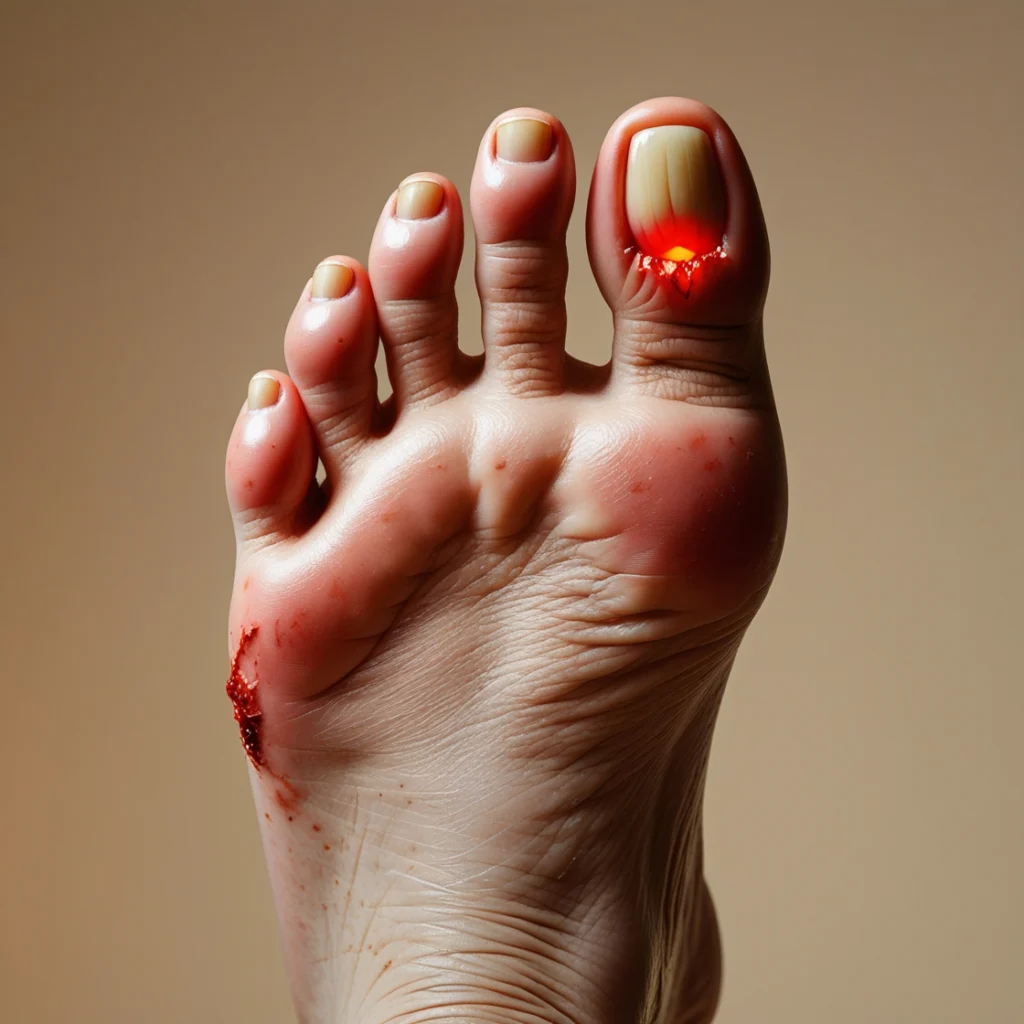Toenail Falling Off? Causes, Treatment & Prevention
Toenail Falling Off? Causes, Treatment & Prevention. If your toenail is lifted but still attached, you’re probably thinking “Help!!!” in sheer panic. Take a few deep breaths — when it comes to losing a toenail, it pays not to panic. First, you should never pull the toenail off. Keeping the area clean and addressing any underlying cause (be it an infection or injury) is more important. Here’s everything you need to know about this super-common issue, reasons why a toenail could be falling off, and what you can do about it.

Reasons Your Toenail Could Be Falling Off
There are myriad reasons your toenail is lifted but still attached, but they’re not all bad — you might just be wearing too-small sneakers when you’re working out, for example. Here are a few common culprits.

Ingrown Toenail Correction Treatment Tool, 64Pcs Breathable Ingrown Toenail Strips in 3 Types, No Glue Safe Ingrown Toenail Tool with 2 Pedicure Tools for Ingrown Toenail Remover.
【Effective Ingrown Toenail Removal Kit】Our ingrown toenail correction patches are specifically designed to address ingrown toenails. By applying upward pressure, ingrown toenail stickers alter the natural curve of nail growth, promoting healthy nail growth and preventing ingrown toenails

Infection
“A fungal infection occurs when there’s an overgrowth of fungi under or on the nail. Fungi love warm, moist environments, which is why they are so common on toenails,” explains Sonia Batra, M.D., a dermatologist and co-host of the show The Doctors. Symptoms of an infection include yellowing and streaking on the nail, a flaky nail surface, and crumbling nails. Left untreated, the nail can detach from the nail bed entirely, she explains.
Trauma or Injury
No infection? Any sort of trauma to the area — such as a heavy object landing on your toe or a particularly hard stub — can also cause the toenail to fall off. “The nail will likely turn dark or black as blood builds up underneath it and puts pressure on it. It will likely fall off in a few weeks,” says Dr. Batra. Oof.
How to Handle a Toenail that is Falling Off
Toenail Falling Off? Causes, Treatment & Prevention. If a toenail has lifted but is still attached, resist the urge to tear it off. “Don’t rip off a broken toenail if it’s not ready,” says Dr. Batra. “If it’s barely attached and just hanging on, it should be fine to gently remove it with clippers,” she notes.
Extra Strength Toenail & Fingernail Repair Drops – Nail Care Renewal for Thick, Damaged & Discolored Nails – 2 Pack..
STOPS NAIL PROBLEMS IN ITS TRACKS: It clears up discolored, brittle and thick toenails and fingernails. Improves the appearance of damaged toenails and finger nails, as soon as possible, even when everything else has not worked.

If you have doubts, though, it is best to leave the affected toenail alone. Just file down any rough edges to keep it from catching on anything, treat any bleeding from the tear, clean the area, and make sure to monitor it for any signs of infection.
What to Do When Your Toenail Falls Off
“If your toenail falls off and it’s bleeding, the first thing to do is apply pressure to the area until it stops bleeding. Then clean the skin underneath with soap and water and apply an antibiotic ointment to prevent infection before covering the open wound with a bandage,” says Dr. Batra. Keep the area clean and covered until the wound closes and heals.
If there are open cuts or tears in the underlying skin from the toenail falling off, you should keep the skin cleaned and covered to prevent bacteria from entering and causing infection, she says. Once all open wounds have healed, it’s fine to leave the area uncovered — just make sure to keep it clean and dry. It’s worth giving your toe a little extra TLC because you definitely don’t want an infection to spread to the new nail growing in.
“Redness/drainage/excessive pain could be signs of infection, but not always,” says Said Atway, M.D., a podiatrist at The Ohio State University Wexner Medical Center. “The consequences of a bacterial infection in the toe are the same as the consequences of any other skin/soft tissue infection in that the infection could spread and lead to further detriment of the surrounding tissue,” he says. Obviously, not great — so if you think it could be infected, go get it checked out by a doctor.
Onycholysis
Onycholysis is a common cause of toenails falling off. In some patients, an injury can lead to onycholysis or it could come about from an allergy to a nail product (artificial nail tip or nail polish remover).
In some cases, onycholysis can develop due to nail fungus or even psoriasis. It can also be an indication of thyroid disease or even a yeast infection.
Unlike trauma to the toe, onycholysis develops over time. As a result, the signs and symptoms present gradually and often go unnoticed. Common signs include:
- Thickening of the nail or a nail discoloration.
- The area under the nail gathers debris and starts loosening.
- In most cases, the area where the nail starts to separate from the nail bed will display a white discoloration.
- If, however, the nail loosening is due to a fungal or bacterial infection, you will notice a dark brown or greenish discoloration.
The Impact of Trauma on Your Toenail
Severe trauma or injury can cause your toenail to fall off or loosen. In most cases, stubbing your toenail or dropping a heavy object on the tip of your toenail can cause trauma or injury – often leading to blood beneath the nail.
The pressure from this bleeding could lead to the toenail getting separated from the nail bed. If the injury is serious, it is not uncommon for the entire nail to fall off completely.
If you suffer severe trauma which leads to bleeding, intense pain, and inflammation, consult with a professional foot and ankle specialist – it’s crucial to rule out bone injury or fracture as soon as possible.
Your Choice of Footwear
Wrong choice of footwear is another common cause for toenails falling off. Ill-fitting or tight shoes can lead to nail trauma. You literally punish your feet when you wear ill-fitting shoes for long hours at work or when pursuing athletic activities.
When your nail suffers trauma, especially repeated trauma, it can lead to bleeding which causes a dark reddish, purplish or black discoloration. As mentioned above, the pressure from this bleeding can cause the nail to loosen.
Also, if your toenails continuously rub against hard or ill-fitting footwear, you might not experience bleeding, but over time the nail can still become loose.
Treatment for Loosened Toenails
If you notice any of the above symptoms, resulting in your nail falling off or becoming separated from the nailbed – work with a foot and ankle specialist.
You might also need to see a dermatologist or another medical professional if a health condition such as hyperthyroidism or anemia is the root cause behind your loosening nails. A detailed analysis is necessary to treat the condition.
If a fungal infection is causing your toenail to loosen, then your doctor might recommend cutting portions of the nail and the use of anti-fungal medication to treat the infection.
Bacterial infections will require a different treatment plan since the infection tends to progress much faster and can be more severe with a more complex range of symptoms.
Post treatment, your nail will grow – however, nail growth is often impacted, and you might notice the nail has a thicker or rougher texture. A toenail can fall off for several reasons.
The most common reasons include injury to the nail bed, fungal infection in the nail, and nail psoriasis. Uncommon reasons include rare side effects of some medications and several rare medical conditions.
Injury
Toenail injuries are common, such as when the toe gets trapped under or crushed by a heavy object. This is particularly common in childhood, according to experts. Toenail injuries can also occur during sports.
If you experience a toenail injury, you may feel pulsing pain in your toe. You may also notice the skin turning dark purple or black due to bleeding under your nail.
Medical professionals call this bleeding a subungual hematoma. The buildup of blood may slowly separate your nail from the nail bed, making it eventually fall off.
Fungal infection
Toenail fungus is common, according to the American Academy of Dermatology (AAD). An existing fungal infection on your foot can spread to your toenails.
Toenail fungus appears as white or yellow nail discoloration, along with a thickening of the nail. As the infection progresses, it can cause the nail to lift or crumble and sometimes fall off.
Causes of toenail fungus include:
- having an existing fungal infection, such as athlete’s foot
- being in warm, moist areas, such as a locker room, public shower, or pool deck
- working in environments where your feet are frequently wet
- wearing the same boots daily, particularly if your feet get sweaty
Keeping your feet clean and dry helps prevent fungal infections from starting. Several treatments are also available, including oral antifungal medications and topical ointments you can apply to your toenails.
Nail psoriasis
Psoriasis is a common skin condition where your body makes new skin cells every few days rather than every few weeks. These new skin cells build up on the surface of the skin and cause thin scaly patches.
People with psoriasis can sometimes get the condition in their nails as well. Psoriasis in the nails may look like:
- white, yellow, or brown discoloration of the nail
- nail pitting, which is when tiny dents form in the nails
- crumbling nails
- nails separating from the fingers or toes
- thickening under the nails
- blood under the nails
If you see these changes in your nails, make an appointment with a dermatologist. A dermatologist is a doctor who specializes in skin and nail conditions.
Without treatment, nail psoriasis may get worse. This may cause the nail to fall off and make walking difficult.
Per the AAD, treatment may include daily topical medications or stronger treatments given in the dermatologist’s office, such as:
- corticosteroid injections into or near the nails
- laser treatments
- PUVA, which involves soaking the feet in a medication called psoralen, followed by exposure to UVA rays
- oral medications, for severe skin and nail psoriasis
The recovery process is sometimes difficult and can take time. For best results, be sure to consistently follow your dermatologist’s directions.
Why Do Toenails Fall Off?
- Trauma and Injury The most common reason for toenail loss is trauma or injury. Accidents like stubbing your toe, dropping something heavy on it, or engaging in high-impact activities can cause damage to the toenail, leading it to detach from the nail bed.
Prevention Tip: Always wear protective footwear during physical activities and be mindful of your surroundings to avoid injuries. - Fungal Infections Fungal infections, such as onychomycosis, are another common cause of toenail loss. As the infection progresses, it weakens the nail structure, making it more likely to loosen and fall off.
Prevention Tip: Keep your feet clean and dry, avoid walking barefoot in public places, and seek prompt treatment for any fungal infections. - Ingrown Toenails Ingrown toenails occur when the edges of the nail grow into the surrounding skin, potentially leading to infection and, in severe cases, causing the nail to fall off.
Prevention Tip: Trim your toenails straight across, avoid tight-fitting shoes, and address ingrown toenails as soon as they appear. - Systemic Diseases Certain underlying health conditions, like diabetes or circulatory problems, can affect nail health. Poor circulation may reduce blood flow to the toes, impacting nail growth and stability.
Prevention Tip: Manage any underlying health conditions with proper medical care and attention.
What to Do if Your Toenail Falls Off
- Keep It Clean After a toenail falls off, it’s crucial to keep the area clean to prevent infection. Gently wash the exposed nail bed with mild soap and water, and apply an antiseptic ointment.
- Protect the Area Cover the exposed nail bed with a sterile bandage or adhesive strip to protect it from dirt and bacteria. Be sure to change the dressing regularly to maintain cleanliness.
- Choose Comfortable Footwear Opt for open-toed shoes or those with ample space to reduce pressure on the affected toe. This helps prevent further damage and promotes faster recovery.
- Monitor for Infection Keep an eye out for signs of infection, such as increased redness, swelling, or discharge. If any of these occur, consult with a healthcare professional promptly.
- Consult a Doctor If the toenail loss results from an underlying health issue or you are unsure of the cause, consult a healthcare professional for a thorough evaluation.
Seeing a toenail fall off can be unsettling, but understanding the causes behind this occurrence is crucial for managing and preventing it in the future. Whether due to trauma, fungal infections, ingrown toenails, or systemic health issues, quick and appropriate care is essential for a smoother recovery.
Preventive measures such as proper nail care, wearing appropriate footwear, and addressing health concerns promptly can significantly reduce the likelihood of toenail problems. Additionally, seeking timely medical advice from a professional can provide a thorough evaluation, help pinpoint the root cause, and recommend the most effective course of action.
Causes of Toenail Falling Off
Dr Kumar listed the common causes of toenail loss as follows:
Trauma or Injury
You might have noticed your toenail falling off after an injury, which is one of the most common causes. “Stubbing your toe, dropping a heavy object on your foot, or participating in activities that put pressure on the toenails, such as running or hiking, can result in nail damage or detachment”, said Dr Kumar.
Fungal Infection
“Fungal infections, such as athlete’s foot or toenail fungus (onychomycosis), can weaken the structure of the toenail, causing it to become brittle, discoloured, and eventually fall off”, added Dr Kumar. Toenails are prone to fungus infections when they are moist and warm, especially when they are worn in tight-fitting shoes or if they are not properly groomed.
Ingrown Toenails
Ingrown toenails, which occur when the edge of the toenail grows into the surrounding skin is another reason for toenail loss. It can lead to pain, inflammation, and infection and may cause the toenail to detach from the nail bed and eventually fall off.
Systemic Conditions
Dr Kumar added, “Certain systemic conditions, such as psoriasis, diabetes, and peripheral arterial disease, can affect nail health and increase the risk of toenail loss. These conditions may impair blood circulation to the toes or weaken the immune system, making toenails more susceptible to damage and infection.”
Tips To Deal With Toenail Loss
Dr Kumar listed some tips that you should follow after your toenail falls off:
Clean the Area
If your toenail falls off, gently clean the affected area with mild soap and water to prevent infection. You should use a sterile bandage or dressing to cover the exposed nail bed and protect it from further injury.
Apply Antiseptic
“Apply an antiseptic ointment or solution to the nail bed to reduce the risk of infection and promote healing. Be sure to follow the instructions provided and avoid using harsh or irritating substances that may cause discomfort”, added Dr Kumar.
Protect the Toe
You should protect the affected toe from further trauma or injury by wearing open-toed shoes or sandals that allow for adequate ventilation and minimise pressure on the toenail. Also, avoid tight-fitting footwear or activities that may exacerbate pain or discomfort.
Seek Medical Advice
Dr Kumar highlighted, “If your toenail falls off due to injury, infection, or underlying medical conditions, consult a healthcare professional for proper evaluation and treatment. Depending on the cause and severity of the toenail loss, your doctor may recommend topical or oral medications, surgical intervention, or other therapeutic measures to promote healing and prevent complications.”







